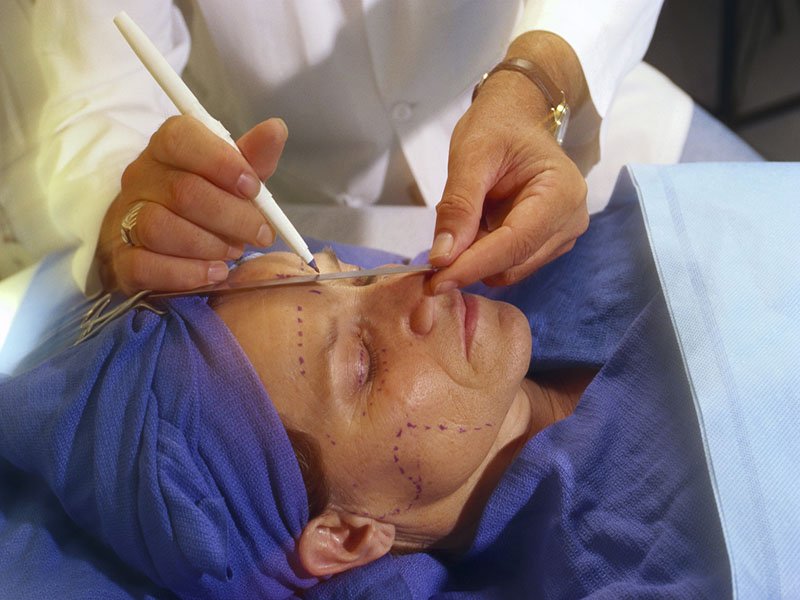
The time, money and pain spent on a facelift may be worth it, a small, new study suggests.
Hundreds of people who looked at photos of 13 women before and after “optimal” facelifts agreed that the women appeared younger, better-looking, healthier and more successful.
These weren’t necessarily routine facelifts, since plastic surgeons deemed them to be samples of top-notch work, and their cost is unknown.
Still, “we showed for the first time that there is a measurable improvement in the appearance of patients undergoing facelift surgery as appreciated by the layperson,” said study co-author Dr. Lisa Ishii. She is an associate professor and chief quality officer with Johns Hopkins Medicine in Baltimore.
The question her team posed was how effective are facelifts at making women look better when judged by the public at large?
To find the answer, the researchers asked five Baltimore-area facial plastic surgeons to provide “after” photos of 16 women who’d undergone facelifts with “optimal” results. The photos were taken at least six months after surgery.
A team then chose 13 of those women, with an average age of 58, to serve as subjects in the study; the races of the women weren’t reported.
The researchers then showed “before” and “after” photos of the women to 483 online survey participants. Almost 80 percent of the survey participants were women, 75 percent were white, and the average age of the group was 29. It was a very highly educated group: About one-third had master’s or doctoral degrees, while another 60 percent had four-year college degrees.
From “before” photos, the participants as a whole estimated the average age of the facelift patients as 60. After, that estimated age dropped to 56.
The participants also ranked the patients higher based on “after” photos on 1-100 scales of attractiveness, perceived success and perceived overall health. Between “before” and “after” photos, the average rating grew from 49 to 57 for attractiveness; 58 to 63 for perceived success; and 55 to 64 for perceived overall health.
The study didn’t look at sex appeal.
“We were interested in measuring the parameters that patients express to us they would like to see improved. Patients do not typically say they want to look sexier after a facelift,” Ishii explained. “They do say that they want to appear younger, more attractive and more successful.”
Ishii noted that the researchers chose optimal facelifts instead of a more representative sample of randomly chosen facelift patients because it’s common to use this kind of approach when experiments are performed for the first time.
Dr. David Castle is a professor of psychiatry at St. Vincent’s Hospital and the University of Melbourne, in Australia, who has studied plastic surgery. He said the study has weaknesses.
The study focuses on optimal images, which “would arguably not generalize to the majority of people undergoing this procedure,” he said. Also, the photos don’t show “what we see when we look at someone” since they aren’t moving images. “Finally,” he noted, “the number of images is very small.”
Castle added that the study doesn’t measure whether facelift patients “feel happier, more confident and more fulfilled. They haven’t captured this at all. It doesn’t get to the core issue — whether people actually feel enduringly better about themselves.”
But Dr. Samuel Lam, a facial plastic surgeon in Dallas, praised the study.
“Too often we have a negative bias about facelifts because we see over-skeletonized and over-pulled results that make individuals older, unnatural or both,” Lam said. “However, good work that is natural and seamless is something that is worthy of study to show to the public the powerful positive value in this procedure when it is done well.”
How can facelift patients choose the best plastic surgeon?
Dr. Michael Reilly, an associate professor of facial plastic and reconstructive surgery at Georgetown University Medical Center, in Washington, D.C., recommends looking at qualifications (a surgeon should be board-certified in either general or facial plastic and reconstructive surgery); expertise (the surgeon should regularly perform the procedure and have pre- and post-op photos of previous patients with similar facial anatomy); and trustworthiness.
“Healing after facelift surgery can take time, and patients need to feel entirely confident that they will be taken care of during and after surgery,” Reilly said.
The study was published online March 16 in the journal JAMA Facial Plastic Surgery.
More information
For more about facelifts, visit the American Society of Plastic Surgeons.
Source: HealthDay

Leave a Reply